资源目录

压缩包内文档预览:(预览前20页/共26页)
编号:6034771
类型:共享资源
大小:1.85MB
格式:ZIP
上传时间:2017-10-23
上传人:机****料
认证信息
个人认证
高**(实名认证)
河南
IP属地:河南
50
积分
- 关 键 词:
-
小型
气动
机械手
设计
全套
cad
图纸
- 资源描述:
-
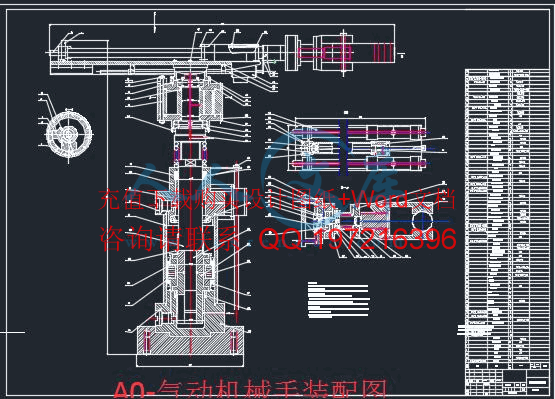

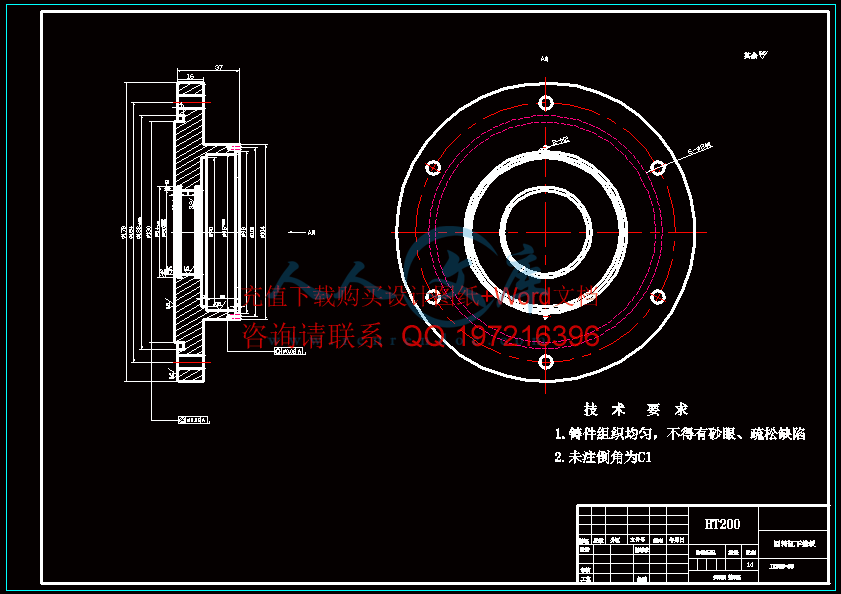
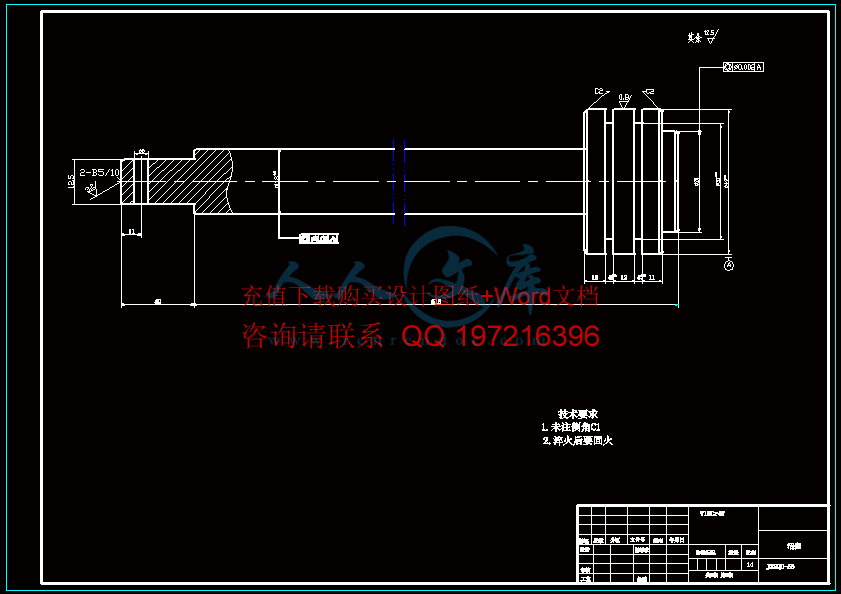
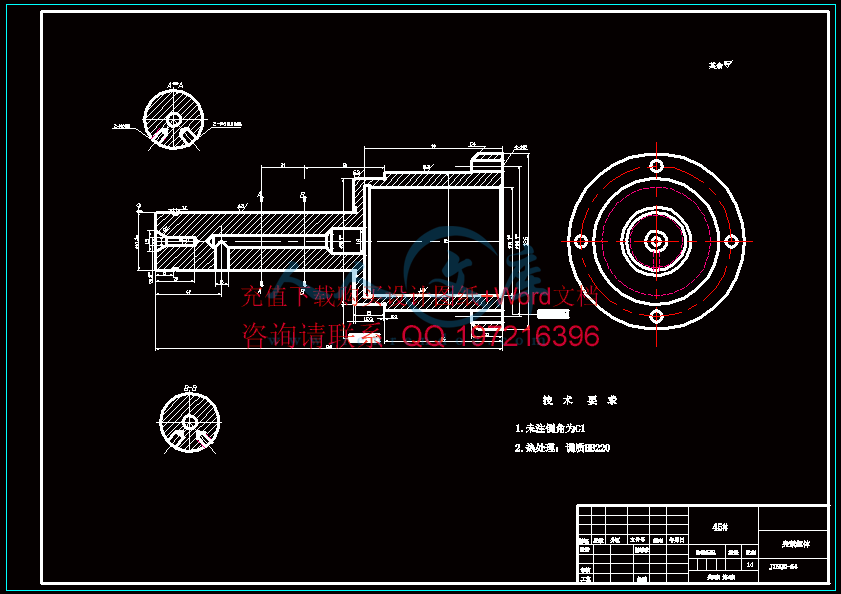

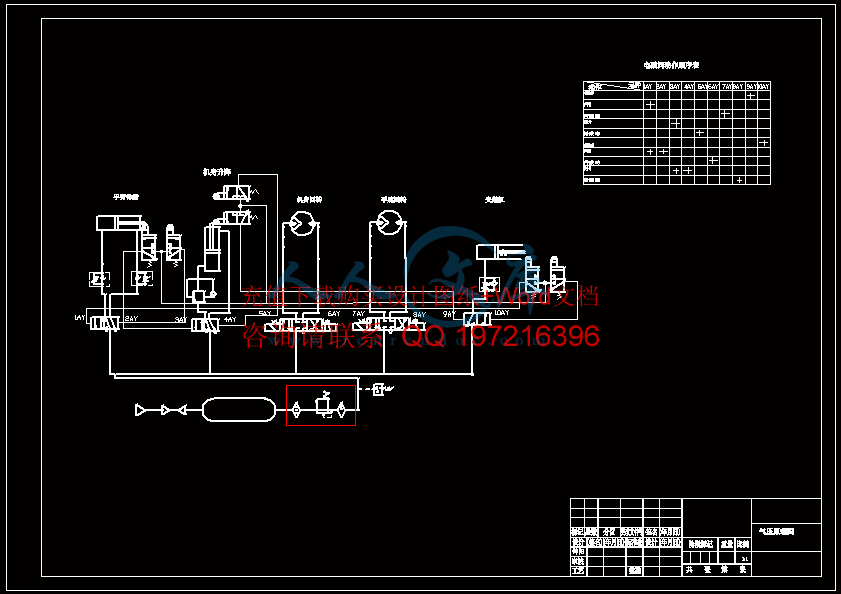
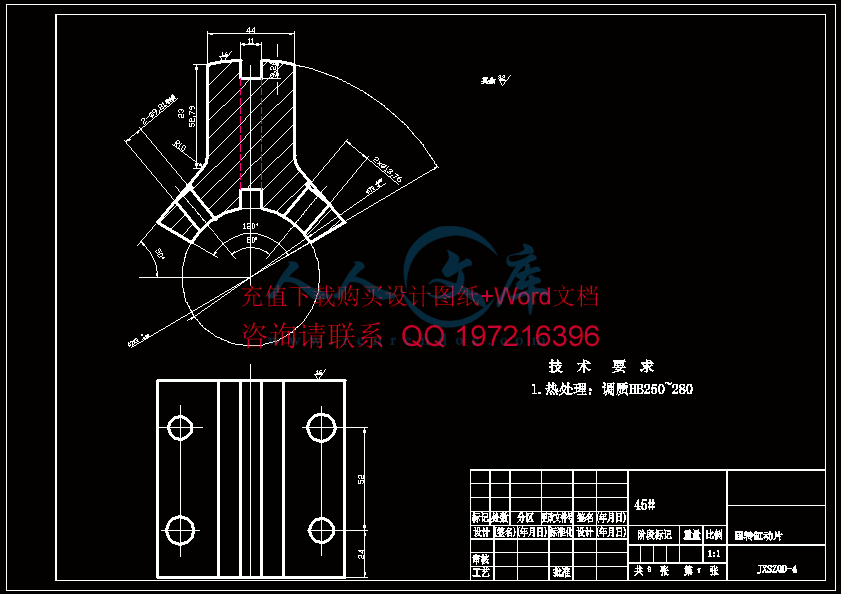


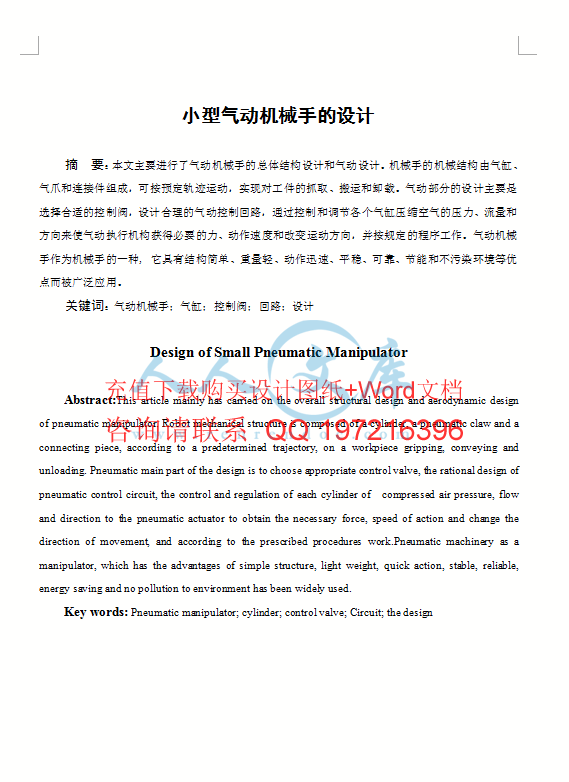


- 内容简介:
-
This paper to be published in the Proceedings of the 1996 IEEE International Conference on Robotics and AutomationFor more information, contact: Roger Quinn, Associate Professor - Mechanical EngineeringCase Western Reserve University, 216-368-3222Design of an Agile Manufacturing Workcell for LightMechanical ApplicationsRoger D. Quinn, Greg C. CauseyDepartment of Mechanical and Aerospace EngineeringFrank L. Merat, David M. Sargent, Nicholas A. BarendtWyatt S. Newman, Virgilio B. Velasco Jr.Department of Electrical Engineering and Applied PhysicsAndy Podgurski, Ju-yeon JoLeon S. Sterling, Yoohwan KimDepartment of Computer Engineering and ScienceCase Western Reserve University (CWRU)Cleveland Ohio, 44106AbstractThis paper introduces a design for agilemanufacturing workcells intended for light mechanicalassembly of products made from similar components (i.e.parts families). We define agile manufacturing as theability to accomplish rapid changeover from the assemblyof one product to the assembly of another product. Rapidhardware changeover is made possible through the use ofrobots, flexible part feeders, modular grippers andmodular assembly hardware. The flexible feeders rely onbelt feeding and binary computer vision for poseestimation. This has a distinct advantage over non-flexible feeding schemes such as bowl feeders whichrequire considerable adjustment to changeover from onepart to another. Rapid software changeover is beingfacilitated by the use of a real-time, object-orientedsoftware environment, modular software, graphicalsimulations for off-line software development, and aninnovative dual VMEbus controller architecture. Theseagile features permit new products to be introduced withminimal downtime and system reconfiguration.1. Introduction1.1 What is Agile Manufacturing ?Agile manufacturing is a term that has seenincreased use in industry over the past several years. Thedefinition of “agile”, however, is not clear, nor is itconsistent: “Agility: The measure of a manufacturersability to react to sudden, unpredictable change incustomer demand for its products and services and make aprofit”1. “Today factories are coming on line that areagile at tailoring goods to a customers requirements,without halting production.”2. “Agile manufacturingassimilates the full range of flexible productiontechnologies, along with the lessons learned from totalquality management, just-in-time production and leanproduction”3. The only common thread among thevarious definitions is the ability to manufacture a varietyof similar products based on what may be rapidlychanging customer needs. In the past, production wasgeared toward high-volume production of a singleproduct. In todays market, however, the emphasis ismoving toward small lot sizes from an ever-changing,customer-driven product line.Figure 1: Agile WorkcellA definition of “agile” manufacturing has beenadopted which applies to light mechanical assembly ofproducts: Agile manufacturing is the ability to accomplishrapid changeover between the manufacture of differentassemblies utilizing essentially the same workcell. Rapidchangeover (measured in hours), further, is defined as theability to move from the assembly of one product to theThis paper to be published in the Proceedings of the 1996 IEEE International Conference on Robotics and AutomationFor more information, contact: Roger Quinn, Associate Professor - Mechanical EngineeringCase Western Reserve University, 216-368-3222assembly of another product with a minimum of change intooling and software. Rapid changeover enables theproduction of small lot sizes, allowing for just-in-timeproduction. A central theme of our definition of “agile”manufacturing is the ability to rapidly introduce(measured in weeks) new assemblies and components intothe system.In this system, rapid changeover is accomplishedthrough the use of reusable software, quick changegrippers for the robotic manipulators, modular worktables, and parts feeders which are flexible enough tohandle several types of parts without needing mechanicaladjustment. These feeders use vision, in place of hardfixturing, to determine the position and orientation ofparts. Generic, reusable vision routines permit new partsto be added to the system with a minimum of effort.A testbed implementation of an agilemanufacturing workcell has been developed (Figure 1).This includes mechanical manipulators, flexible partfeeders, a vision system (cameras, frame grabber, and alibrary of image processing routines), as well as a limitednumber of dedicated sensors and actuators needed tocomplete a given assembly. The central feature of such aworkcell is a controller capable of controlling each of theaforementioned components.1.2 Relevance of CWRU WorkSeveral companies have implemented what maybe considered “agile” manufacturing. Motorola hasdeveloped an automated factory with the ability toproduce physically different pagers on the sameproduction line4. At Panasonic, a combination of flexiblemanufacturing and just-in-time processing is being used tomanufacture bicycles from combinations of a group ofcore parts5.Against the backdrop of such work, the CWRUworkcell is innovative in several ways. The use of vision-guided, flexible parts feeders is one example. Another isthe development of software design patterns for agilemanufacturing. The over-arching design philosophy ofquick-changeover, however, is what makes this workcellparticularly novel. The CWRU workcell has beendesigned to be a versatile production facility, amenable toa wide range of applications and an enabling technologyfor factory wide agile manufacturing.2. Workcell HardwareThe agile workcell developed at CWRU consistsof a Bosch flexible automation system, multiple AdeptSCARA robots, as many as four flexible parts feeders perrobot, and an Adept MV controller. An important featureof the workcell is the central conveyor system, which wasimplemented using standard Bosch hardware. It isresponsible for transferring partially completed assembliesbetween the robots and for carrying finished units to anunloading robot The robots are mounted on pedestals nearthe conveyor system. Pallets with specialized partsfixtures are used to carry assemblies throughout thesystem, after which the finished assemblies are removedfrom the pallet by the unloading robot. Finally, a safetycage encloses the entire workcell, serving to protect theoperator as well as providing a structure for mountingoverhead cameras.2.1 Conveyor SystemThe conveyor system used in the CWRUworkcell is a model T2 manufactured by Bosch. Palletsare circulated on two main conveyor lines. These linesare parallel to each other and operate in oppositedirections. Pallets are transferred between these twosections by means of Lift Transfer Units (LTUs). Theseallow for the circulation of pallets around the conveyorsystem and the capability to re-order the pallets.Each of the pallets in the system is given aunique identification number, allowing the system to trackand direct its progress. Stops are mounted at criticalpoints on the conveyor to control the flow of the pallets.An innovative use of this conveyor system is theuse of short “spur lines”. A spur (Figure 2) is simply anextension of the conveyor, perpendicular to the main line(analogous to a railroad spur). This allows the flow of themain conveyor line to be maintained while a robotperforms an assembly at the spur. Pallets entering a spurare registered in the robots world coordinate frame by anarm-mounted camera, allowing the robot to place orremove parts on the pallet and avoiding the expense ofmechanical registration.2.2 Assembly StationsSeveral assembly station layouts were analyzedin choosing the final layout. After evaluating severalfeatures of each layout, including: placement of therobots relative to the conveyor, impact of feederplacement relative to the robot work envelope, and therobot motions necessary for a generic assembly, it wasdetermined that the layout in Figure 2 would best suit theneeds of the workcell.Each assembly robot is surrounded by twomodular, removable work tables and two fixed feedingtables (Figure 2). The modular tables are easilyexchangeable, allowing for specialized assemblyhardware to be placed within the robots work envelope.The modular tables contain pneumatic actuators andThis paper to be published in the Proceedings of the 1996 IEEE International Conference on Robotics and AutomationFor more information, contact: Roger Quinn, Associate Professor - Mechanical EngineeringCase Western Reserve University, 216-368-3222electrical sensors which can be connected quickly,allowing the rapid change of any specialized toolingrequired for a given assembly. By designing these tablesto be modular and easily exchanged, different assemblyhardware can be quickly accommodated. To achieverapid changeover, the modular work tables are registeredin the robots world coordinate system in the samemanner as the pallets (i.e. using an arm-mounted camera).The feeding tables are fixed, and the horizontal, parts-feeding conveyors are mounted to them.Figure 2: Workstation LayoutOne drawback of the conveyor/spur system, asoutlined above, is the time required to exchange a fullpallet for an empty one. During this time (approximately15 seconds) the robot would conceivably be inactive. Asimple solution to this problem is a mini-warehouse: afixture is located on the exchangeable portion of the worktable to hold a few completed assemblies. During a palletswap, the robot can continue the assembly operationworking while the incoming pallet arrives, placing thecompleted assemblies in the mini-warehouse. After theincoming pallet is transferred to the spur, the visionsystem registers the pallet. The robot places the currentassembly (still in its gripper) on the pallet and thenproceeds to move the completed assemblies from themini-warehouse to the pallet.2.3 Flexible Parts FeedersEach feeder consists of three conveyors (Figure3). The first conveyor is inclined and lifts parts from abulk hopper. The second conveyor is horizontal, with atranslucent belt. It transports the parts to the robot,presenting them at an underlit section near the robot. Thethird conveyor returns unused or unfavorably orientedparts to the bulk hopper.Proper functioning of the feeders depends on theparts being lifted from the bulk hopper in a quasi-singulated manner. Many factors influence theeffectiveness of the inclined conveyor: the angle of theconveyor with respect to the horizontal, the beltproperties (e.g. coefficient of friction), the type of belt(cleated, magnetic, vacuum), and the linear speed of thebelt, for example.Figure 3: Flexible Feeding System SchematicWhen different parts are to be fed, the bulkhopper is emptied and filled with the new parts. If theparts are of a similar geometry, no changes to the feedingsystem are typically needed. Some parts, such as circularor cylindrical ones (i.e. ones that would roll back downthe incline) may need a different belt surface, such as acleated one, or a different angle of inclination.Overhead cameras are used to locate parts on thehorizontal conveyors. An array of compact fluorescentlights is installed within each of the horizontal conveyors.These lights together with a translucent conveyor beltprovide an underlit area in which parts can be presented tothe vision system. Using binary vision tools (currentlyprovided by an Adept vision system) parts on the feederbelts are examined. First, the vision system looks to see ifa part is graspable (i.e. the part is in a recognized, stablepose (position and orientation) and enough clearanceexists between the part and its neighbors to grasp it with agripper). Second, the pose of the part in the robots worldcoordinates is determined. This pose, and the motionsassociated with acquiring the part, are checked to makesure that they are within the work envelope of the robot.2.4 Vision SystemOne essential function of the vision system is todetermine the pose of components for flexible partsfeeding. Pose estimation is performed using built-infunctions of the AdeptVision software, and must be fastenough not to interfere with the assembly cycle-time. Asecondary function of the vision system is to registerpallets and modular work tables to a robots worldcoordinate system, avoiding the need for alignmenthardware. Still another use may be error recovery,This paper to be published in the Proceedings of the 1996 IEEE International Conference on Robotics and AutomationFor more information, contact: Roger Quinn, Associate Professor - Mechanical EngineeringCase Western Reserve University, 216-368-3222wherein the cameras can be used to inspect critical pointsin the system, or in-process assemblies.The vision system uses a number of standardCCD cameras, mounted either above the flexible partsfeeders or on the robot arms. Since the number of camerainputs to the AdeptVision system is limited to four, a low-cost, custom video multiplexer was developed, utilizing amonolithic video-switcher integrated circuit. This allowsup to four cameras to be attached to each video input onthe video hardware.In keeping with the quick-changeoverphilosophy, the vision routines are designed to bereusable; that is a given routine may be used to locateseveral different but similar parts (i.e. similarasymmetries, topology, etc.). This approach has manyadvantages, including minimizing the number of softwareroutines. In addition, this reusability allows for softwaremodularity and “agility6.” For example, byparameterizing the characteristics that a routine searchesfor, it can be applied to parts that have a similar profilebut are of a different size. This means that parts withsimilar geometries to those in the parts library can beadded to the system by simply modifying the inspectionprocedures that call these lower-level, reusable routines.2.5 Introduction of New PartsAdding a new part to the system involves a fewwell defined tasks. A vision routine which determines thepose of the part is developed, utilizing the library ofreusable vision routines. If the new part hascharacteristics that appear nowhere else in the partslibrary, new routines may need to be added to the softwarelibrary. Also, if the part has not been designed for use onthe generic parts feeders (e.g. it has no stable poses, like acylinder), the feeders may require a belt change or achange in the angle of inclination. A gripper must also bedesigned to manipulate the new part. In order to minimizethe specialized hardware and avoid tool changes duringassembly, the gripper design should be performedconcurrently with the gripper designs for other parts to beassembled at a given robot. For instance, if a givenoperation requires both an A widget and a B widget to beassembled at the first robot, the gripper designer shouldtake this into account.In general, it is best to design the parts and theassociated hardware concurrently. This will allowmaximum reuse of software, minimal change to theflexible feeding setup and the design of a robust assemblysequence which will enhance unattended operation. Thisapproach is known as Design for Manufacturing andAssembly7, or simply DFMA.3. Computer Hardware/ControllerDesignThe current software has been developed entirelyin the V+8programming language and operating system,on Adepts MV controller. For most industrialapplications, this programming environment would besufficient; however, it lacks the power and flexibilityneeded to support rapid software development andchangeover. This is largely because V+ lacks featureswhich are standard in other languages and operatingsystems, such as user-defined functions, standard datastructures and shell script execution.To circumvent these limitations, a moreextensive controller interface design is underdevelopment. It will allow the system to support C andC+, and provide a friendlier and more flexible userinterface. In addition, it will allow the use of a real-timeoperating system, thus simplifying software developmentand improving performance.I/OReflectiveMemoryNetworkEthernetAdept MV ControllerAgile WorkcellNon-Adept VME CageWorkstationFigure 4: System ArchitectureIn this design, the systems capabilities areexpanded by using a second VMEbus in addition to theMV controller VMEbus (Figure 4). This second VMEbushouses I/O boards and dedicated single-board computers(SBCs), on which a real-time operating system executes.C and C+ programs running on the SBCs areresponsible for all high-level control and robot motions(e.g. conveyor control, pneumatic operations, specifyingrobot destinations), while the MV controller is usedexclusively for low-level robot motions (e.g. servocontrol and trajectory generation) and some machinevision routines. In later implementations, a visionprocessing board can also be used on the secondVMEbus, thereby augmenting the AdeptVision system.The two buses are connected by a reflectivememory network. This consists of two memory cards,one on each bus, which can be connected by either acable or a fiber optic link. Changes made to memory onThis paper to be published in the Proceedings of the 1996 IEEE International Conference on Robotics and AutomationFor more information, contact: Roger Quinn, Associate Professor - Mechanical EngineeringCase Western Reserve University, 216-368-3222one board are automatically reflected on the other, thusallowing commands and data to be transmitted betweenthe two buses9. The SBCs can thus place robot andvision commands on the reflective memory network.These are read by a set of command servers running onthe MV controller. The servers execute the commandsand, where applicable, return the results via the samenetwork.4. Workcell SoftwareSoftware is another key to the flexibility of anagile manufacturing work
- 温馨提示:
1: 本站所有资源如无特殊说明,都需要本地电脑安装OFFICE2007和PDF阅读器。图纸软件为CAD,CAXA,PROE,UG,SolidWorks等.压缩文件请下载最新的WinRAR软件解压。
2: 本站的文档不包含任何第三方提供的附件图纸等,如果需要附件,请联系上传者。文件的所有权益归上传用户所有。
3.本站RAR压缩包中若带图纸,网页内容里面会有图纸预览,若没有图纸预览就没有图纸。
4. 未经权益所有人同意不得将文件中的内容挪作商业或盈利用途。
5. 人人文库网仅提供信息存储空间,仅对用户上传内容的表现方式做保护处理,对用户上传分享的文档内容本身不做任何修改或编辑,并不能对任何下载内容负责。
6. 下载文件中如有侵权或不适当内容,请与我们联系,我们立即纠正。
7. 本站不保证下载资源的准确性、安全性和完整性, 同时也不承担用户因使用这些下载资源对自己和他人造成任何形式的伤害或损失。

人人文库网所有资源均是用户自行上传分享,仅供网友学习交流,未经上传用户书面授权,请勿作他用。
 川公网安备: 51019002004831号
川公网安备: 51019002004831号